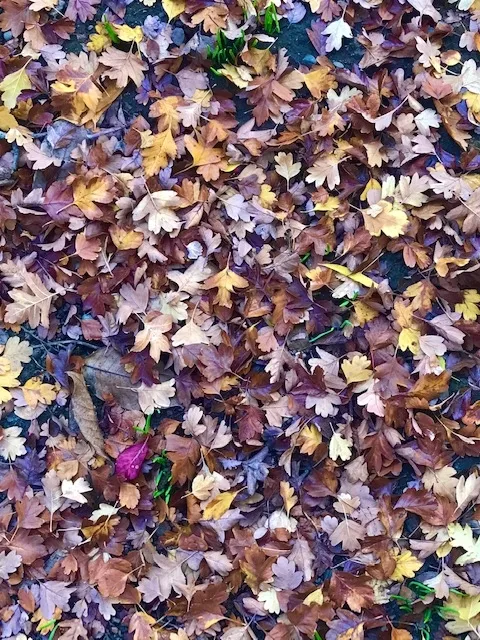by Cindy Watter

The hawthorn is attractive, with its shiny green leaves. It has white blossoms in the spring, red berries in late summer and fall, and multicolored autumn foliage. The leaves are about two and a half inches long, oval in shape, with lobes, rather like a tiny oak leaf. When they fall, I rake them into piles and let them stay there. They turn into natural mulch, supporting microorganisms and gradually decaying. Of course, I put some in the compost bin, too.
The hawthorne's main purpose, however, is to provide habitat and food for birds. Sparrows, robins, mockingbirds and chickadees all eat the berries in the winter, when other foods are scarce. They also enjoy sitting in the branches, singing, and some will build nests there in the spring. My hawthorn tree is home to several birds, and they added to the sociable atmosphere during this last COVID summer, when human visitors were rare.
The hawthorn is part of the rose family, and is native to Europe, Asia, and North America (temperate regions only). The English varieties are easy to grow and very popular here. Hawthorns do not require much care once they are established, beyond a pruning now and then. Mine is quite tall because I neglected that part, but the birds don't care. The fruits (called "haws" in England) look like tiny red apples and I have seen birds swallow them whole.
Hawthorns are difficult to propagate from seed, but do throw out shoots that can be replanted. Local nurseries sell hawthorns. They should be planted in full sun, and fertilized in the spring. They do require some water the first year or so, and during unusual stretches of hot dry weather, like any tree. Mulch helps retain moisture. Mine is over forty years old and is thriving.
I have seen hawthorns grown as shrubs and hedges in Europe. About thirty years ago, the City of Napa planted more street trees, and instead of the ubiquitous liquidambar, inserted some hawthorns in my neighborhood. They are pretty and support the avian population.
Information links:
Cal poly selectree https://selectree.calpoly.edu/tree-detail/crataegus-autumn-glory
National Wildlife Federation https://www.nwf.org/
Master Gardeners are following recommended social distancing guidelines that keep everyone safe, Napa Master Gardeners are available to answer garden questions by email: mastergardeners@countyofnapa.org. or phone at 707-253-4143. Volunteers will get back to you after they research answers to your questions.
Visit our website: napamg.ucanr.edu to find answers to all of your horticultural questions.
Photo credits: Cindy Watter

